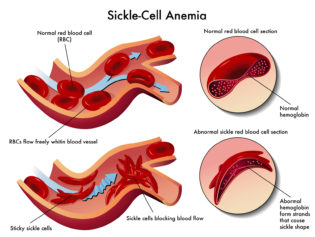Sickle cell anemia is an autoimmune disease that affects around 1 million people in the United States. Recently, researchers have been exploring herbal remedies, some of which involve the use of pepper plants, that could help patients to manage sickle cell anemia and reduce pain.
Sickle cell anemia, more accurately referred to as sickle cell disease, is actually a collection of red blood cell disorders. People who have the condition have sickle hemoglobin in their red blood cells, and their red blood cells are abnormal in shape. The cells resemble a sickle instead of the round appearance of healthy red blood cells.
A number of clinical studies indicate that there are several natural treatments that can improve the health of people with sickle cell disease. Researchers from the National Institute for Pharmaceutical Research and Development in Nigeria have concluded that a combination of several herbal extracts could provide a possible sickle cell anemia treatment.
Nicosan, also called Niprisan, was given to 30 patients with sickle cell anemia. During the one-year testing period for the medication, 73 percent of the patients did not have a sickle cell-related health crisis, and 27 percent had fewer severe sickle cell anemia symptoms.
Capsaicin, which is found in cayenne pepper, is one of the herbs used in Nicosan. This ingredient reduces inflammation and facilitates blood flow. The herbal medication also contains cloves and West African pepper, which is used to make black pepper.
These herbs help with pain management, which is essential for treating sickle cell disease. These natural remedies are also quite potent when it comes to protecting the immune system and preventing infection.
Ongoing research is being conducted concerning these supplements and the positive effects they could have on sickle cell patients with long-term use.
Sickle cell disease is lifelong and affects people at varying levels of severity. Anemia is one of the most common symptoms of sickle cell disease, which is why the term “sickle cell anemia” is often used interchangeably with “sickle cell disease.” However, those suffering from the disease can also experience strokes more frequently than people who don’t have sickle cell disease. Chest pain, difficulty breathing, lack of adequate blood flow to the liver and spleen and increased risk of infection are also common in sickle cell patients.
Hemoglobin is a blood protein that is responsible for transporting oxygen through the body. A person suffering with sickle cell disease often experiences pain and low iron levels, since the hemoglobin in the body is not functioning well. The sickle shape of the cells prohibits the proper flow of blood to the tissues, creating a host of health issues.
Those who have sickle cell anemia inherit one abnormal gene for the condition from each parent. One of every 365 Black children has sickle cell anemia, and one in every 13 African-American children are born with the sickle cell trait. In a 1994 study published in the New England Journal of Medicine, the average life expectancy for men with sickle cell anemia was 42; the life expectancy for women with the disease was 48.
Pain relief medications and antibiotics are two types of medications that are often prescribed to sickle cell patients. Fairly new treatments, such as blood stem cell transplants, are also being implemented for some individuals. Additional gene therapy solutions are also being studied and researched to determine how effective they will be for those living with the chronic disease.
Blood transfusions and bone marrow transplants are also treatments that are being enhanced for the purpose of assisting sickle cell patients in living full and healthy lives.



